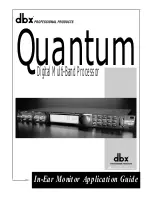
Key features
R&S
®
SMBVB-K362, R&S
®
SMW-K362
5
User Manual 1178.9126.02 ─ 04
1
Key features
The test suites R&S
SMx-K362 provide generic GNSS tests with the sequencer tool
R&S
CMWrun. The tests are performed on a connected in-vehicle system (IVS).
The test equipment simulates a global navigation satellite system (GNSS). The
R&S
CMWrun controls the test equipment via SCPI commands and the IVS typically
via vendor-specific commands. The test cases can be performed fully automatic, with-
out user interaction.
Table 1-1: Supported test cases
Test case
Test purpose
1. Verify NMEA transmis-
sion from DUT
Checks that the GNSS receiver outputs the navigation parameter data to
external devices in NMEA-0183 format
2. Location accuracy (static
receiver)
Estimates the error in the evaluation of the plane view and altitude in the
autonomous static mode. A static location is simulated and the error between
actual and determined location is calculated
3. Location accuracy (mov-
ing receiver)
Estimates the error in the evaluation of the plane view, altitude and velocity in
the dynamic mode with signal impairments. A certain trajectory is simulated,
signal is faded and partly blocked. The velocity error and the error between
actual and determined location as well as the velocity error is calculated
4. Time-to-first fix (TTFF)
under cold start conditions
Determines the time to first navigation fix for a reset receiver. The ephemeris
and almanac data from all satellites are cleared and thus, the receiver has to
gain all data and the time to first fix is measured. One measurement step
comprises signal acquisition at the TX level of -130
dBm and the cold start of
the DUT, until it can acquire the signal again. The cold start is executed with
specified repetitions. The averaged measurement time must not exceed con-
figurable T
PosFix
value.
You can also change TX level configuring a power offset.
5. Reacquisition time
Evaluates the restore time for signal tracking for a certain GNSS constella-
tion after tracking was lost due to signal blockage. To simulate blockage, the
radio frequency signal is switched off for a specified time and the recovery
time is measured after the signal was switched on. One measurement step
comprises signal off, signal on, until the DUT can acquire the signal again.
Each step is executed with specified repetitions.
6. Tracking and acquisition
sensitivity
Verifies the sensitivity of the GNSS navigation module in signal acquisition
mode and in tracking mode. The acquisition time is measured with the con-
figurable start level and acquisition level (acquisition sensitivity). The tracking
time is measured with the configurable signal level (tracking sensitivity).
Acquisition and tracking step timeout is configurable.
7. Functional RAIM test
Checks the receiver autonomous integrity monitoring (RAIM) algorithm by
degrading the pseudo range of several satellites over time in the simulated
signal. The satellites are biased over time and detected satellites must be
neglected after exceeding the specified threshold






































